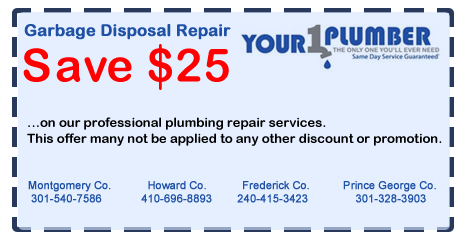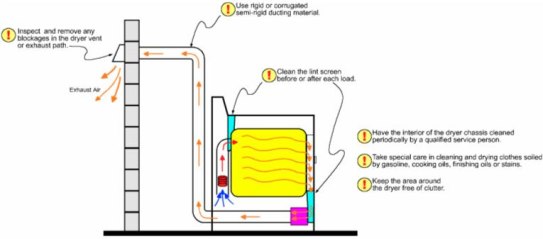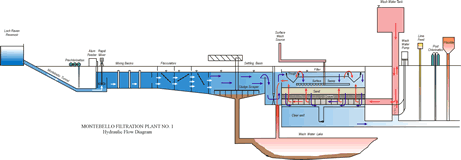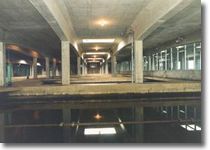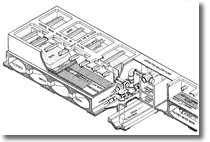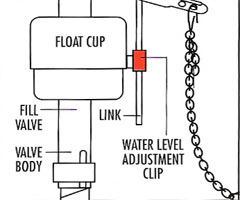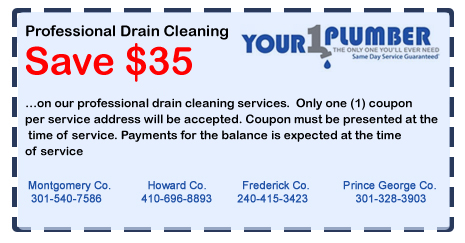A clogged garbage disposal is generally caused by the lack of water while grinding the waste material and inability of the flywheel to grind the food waste.
This may also happen because the disposal has outlived its lifespan.
Things you’ll need for this job:
- Water
- Baking soda
- Vinegar
- Flashlight
- Knife
- Toilet plunger
- Wrench
- Screwdriver
Step 1: Power Off
Turn off the circuit breaker from the main electric panel and power off the garbage disposal system.
Step 2: Water and Vinegar
Try running water down the garbage disposal system. Also, pour in a mix of baking soda and vinegar. This may help loosen the waste material and clear the clog.
Step 3: Check Drain
Shine a flashlight through the sink into the garbage disposal hole. Check to see that there is no debris that is blocked there. One can use an implement like tongs or a sharp knife to try and free whatever is jammed inside.
Step 4: Use Plunger
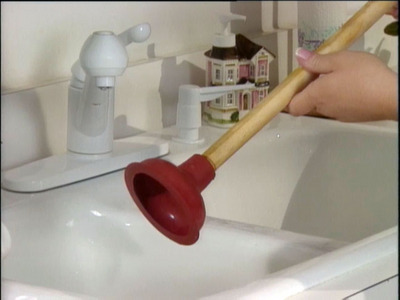
If the drain system has backed up, place a clean toilet plunger over the drain. Pump the water in and out until the water begins to drain out. This may help clear the source of the clog.
Step 5: Check Hex-head Hole
Open the cupboard under the sink that houses the garbage disposal unit. At the bottom of the garbage disposal cylinder, there is a hex-head hole to which a hex-head wrench can be fitted. Turn the wrench clock-wise and counter-clockwise a number of times until it can go around in either direction. Any unseen obstruction will be removed by following this step. In case a hex-head wrench is not available, one can use a wooden implement to insert into the opening.
Step 6: Clean Blades
Rotate the blades in the garbage disposal by using the tip of a screwdriver. If the blades do not move easily, this may be the cause of the trouble. Rotate the blades till you are able to free the obstruction from the blades. If the rotation does not help, one can try tapping a sledgehammer against the screwdriver to try and dislodge the obstruction. A mirror and flashlight can be used during this process. The clogging generally happens when items like potato skins, banana skins and egg shells get caught under the blades.
Step 7: Clean the P-Trap
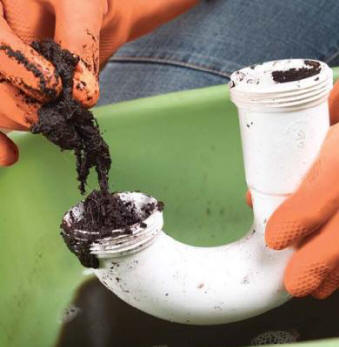
Sometimes coffee grounds cause clogs to occur. These occur in the P-trap and trap arm of the drain. Unscrew the nut at the bottom of the tee along with the slip nut that lies between the P-trap and the trap arm. Clean the trap and reinstall it. Test it with warm water to see that it is in working condition. Keep a pan underneath to trap the dirty water that will flow out. Remove the trap arm and clean it. The debris can be removed from the pipe stub by running a screwdriver inside it.
Step 8: Test and Check
Turn on the reset button at the bottom of the garbage disposal cylinder. Turn on the electricity from the main electricity panel. Also, turn on the power switch of the garbage disposal system. Check that the garbage disposal system is in working condition.
Need a Little Friendly Advice or Assistance?
If you have trouble with any part of this process, give us a call and if we’re not immediately available to assist you, one of our technicians will return your call at the very first opportunity.
Or, if the project proves to be more than you care to tackle yourself, here’s a $25 savings you can apply to our professional plumbing repair services!
